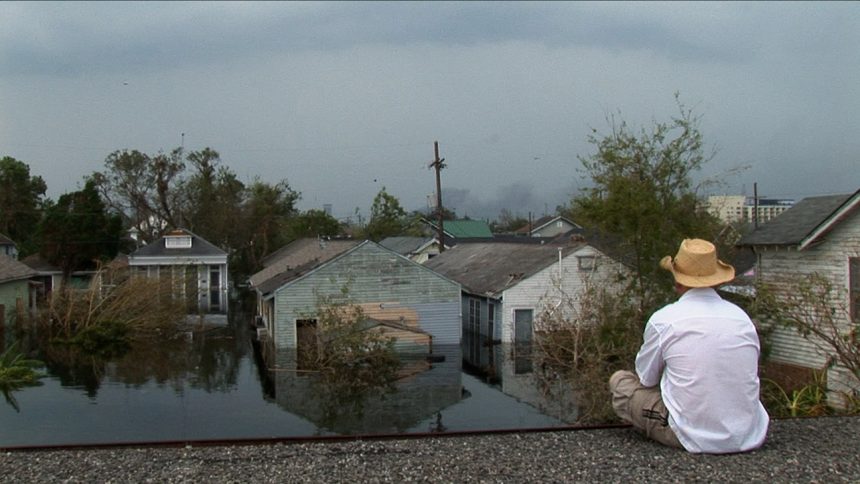‘Hurricane Katrina: Race Against Time’ Review: NatGeo’s Ryan Coogler-Produced Docuseries Is a Potent 20th-Anniversary Reflection
The destruction and loss of life associated with Hurricane Katrina have always been simultaneously unfathomable and fully fathomable, in a way that isn’t always the case with tragedies of that scale.
Within weeks of the disaster, fingers were being pointed — accurately — at the man-made climate conditions that worsened things, the engineering screw-ups and the bureaucratic atrocities that left so many people and so many neighborhoods fending for themselves.
Hurricane Katrina relatively swiftly became the subject of definitive cultural explorations, starting with Spike Lee’s deeply felt documentary masterpiece When the Levees Broke (2006), and then David Simon and Eric Overmyer’s simultaneously funereal and joyful HBO series Treme (2010).
As the 20th anniversary of Hurricane Katrina approaches in late August, viewers can expect a slew of reflective documentaries confronting that fathomable/unfathomable dichotomy — projects made without expectations of equaling When the Levees Broke, but with a different imperative in mind.
You Might Also Like
Up first is NatGeo’s five-part Hurricane Katrina: Race Against Time. Produced by Ryan Coogler‘s Proximity Media and directed by Traci A. Curry, Race Against Time isn’t determined to break new information or even to offer refined understanding. Instead, it’s a straightforward and passionate reminder that just because we know what went so very wrong in New Orleans — resulting in an estimated 1,392 fatalities and $125 billion in damages — doesn’t mean that lessons were learned or retained.
This project arrives in the near-aftermath of horrifying flooding in Texas, which exposed some similar failings in response and management. But at a moment when dire phenomena are shaking our lives with a frequency that defies precedent, who knows what current events Race Against Time will be mirroring in upcoming weeks?
Curry’s approach is simple, but potent: She lets a group of New Orleans residents, identified through their proximity to Katrina hot spots like the 9th Ward, Algiers and Tremé, tell their stories on a minute-by-minute, hour-by-hour basis.
Many of them have been selected because, for whatever reason, they were documenting their lives as Katrina was building strength and approaching New Orleans. Some of them, like Shelton Alexander, an aspiring beat poet at the time, were simply filming their everyday lives when catastrophe struck. Others had digital video cameras in that pre-smart phone age and recognized that whatever was coming needed chronicling. Several of the subjects make appearances in news footage as the media swarmed New Orleans, initially offering warnings and then, as many relate, delivering a skewed testament in those early days of misreporting and misinformation.
Their stories include the reasons that kept them from evacuating and then the harrowing odysseys that took some of them through fetid streets of flood waters, others to the nightmare that was the Superdome or the Convention Center, and still others across impassable bridges and freeways. Each account is filled with a mixture of heroism and doomed misadventure. People like community organizer Malik Rahim, granted first and last word here, have found peace over 20 years of rumination, though anger and sadness keep bursting to the surface.
These figures are complemented by interviews with people who were on the ground in New Orleans in official capacities — though as every police officer or firefighter reminds us, just because they were doing their jobs doesn’t mean they weren’t experiencing Katrina.
If you’re looking for people self-flagellating or being held to direct account, that either wasn’t Curry’s goal or it didn’t match the people she had access to. FEMA, for example, is represented by a lone Cassandra-like figure, who quotes from the emails and phone conversations he tried having with oblivious leadership (Michael Brown, naturally, does not appear). The local government is represented not by then-New Orleans mayor Ray Nagin or Louisiana governor Kathleen Blanco, but by a spokesperson whose agenda is passing the blame pretty much anywhere else. Eddie Compass, superintendent of the police department, is the closest the documentary comes to featuring somebody who expresses regret, and even that is diluted by emphasizing the surrounding chaos.
Instead of giving us people to criticize, Curry offers first responders who went out in boats as the water levels rose, coast guardsman who swung down from helicopters to save those stranded on rooftops, and countless civilians who helped their families and strangers alike.
Because Curry has so much footage from personal troves — and not just familiar images from CNN and local news (Thanh Truong is one of the few featured journalists) — she doesn’t need much visual embellishment. Other than showing a map of the area that highlights individual neighborhoods and contextualizes the areas of flooding, she relies heavily on intercutting between unnervingly grainy and murky images from those dark days and more polished footage of talking heads today. It’s a gap of 20 years, but it often feels like the two sets of footage came from parallel universes.
And speaking of parallel universes, the series builds to a conclusion underlining the duality that still exist in New Orleans — the parts of the city that have seemingly recovered entirely (no fair guessing the racial and economic demographics of those areas) and the parts that have only moved partway into the realm of the living, vacant lots serving as memorials for people who never returned.
It’s New Orleans’ story, but versions of it are currently playing out in parts of Texas or areas of North Carolina still impacted by Hurricane Helene. What happened with Katrina involved a storm, poorly constructed levees and hyperbolic stories about crime that obscured the real problem of unprepared government agencies. But as Malik Rahim puts it, New Orleans was just the canary in the American coal mine. We know what happened. We just can’t be allowed to forget.







